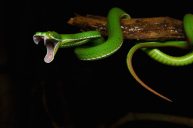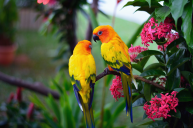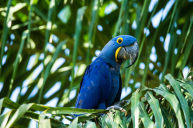While most of us are aware that poisonous animals exist, we assume we know where to look for them. Me personally, I am always looking for them on the ground. After all, that is where you will often find things like poison dart frogs. However, what if I told you you needed to worry about looking in the sky too? That's right apparently poisonous birds exist too and scientists have recently discovered 4 species of them.
4 Species Of Poisonous Birds Are Discovered...Oh Joy

Shutterstock Image Papua New Guinea
While we, or at least I, am new to this information Discover Wildlife shared that "local people had known" for some time about poisonous birds. While they may have not known the specifics, they knew that "some birds taste foul and cause numbness if handled." Using their intelligence, they tended to stay clear of the birds that had these traits.
Now, scientists are catching up and have identified 4 species of poisonous birds. Okay, maybe they have known for a bit. In 1989 they discovered the hooded pitohui of Papua New Guinea. Those scientists discovered that the bird had toxic feathers and skin. Similar to the well-known poison-dart frogs, these birds derive their toxicity from their diet, which happens to be beetles.
Papua New Guinea seems to be the land of the poison because all the other poisonous birds were also found there. Three of the four are pitohui species and the other is a blue-capped ifrita. Now a couple of new birds are being added to the list. The regent whistler and the rufous-naped bellbird now make the cut. Similar to the other poisonous birds both of these birds displayed the poisonous toxins in their feathers and their bodies.
Discover Wildlife shared that the specific poison in question is Batrachotoxin (BTX). Which the potent nerve poison that makes poison dart frogs so well known and feared. Furthermore, scientists believe that they aren't finished. Many of them highly suspect that there are even more poisonous birds out there.




